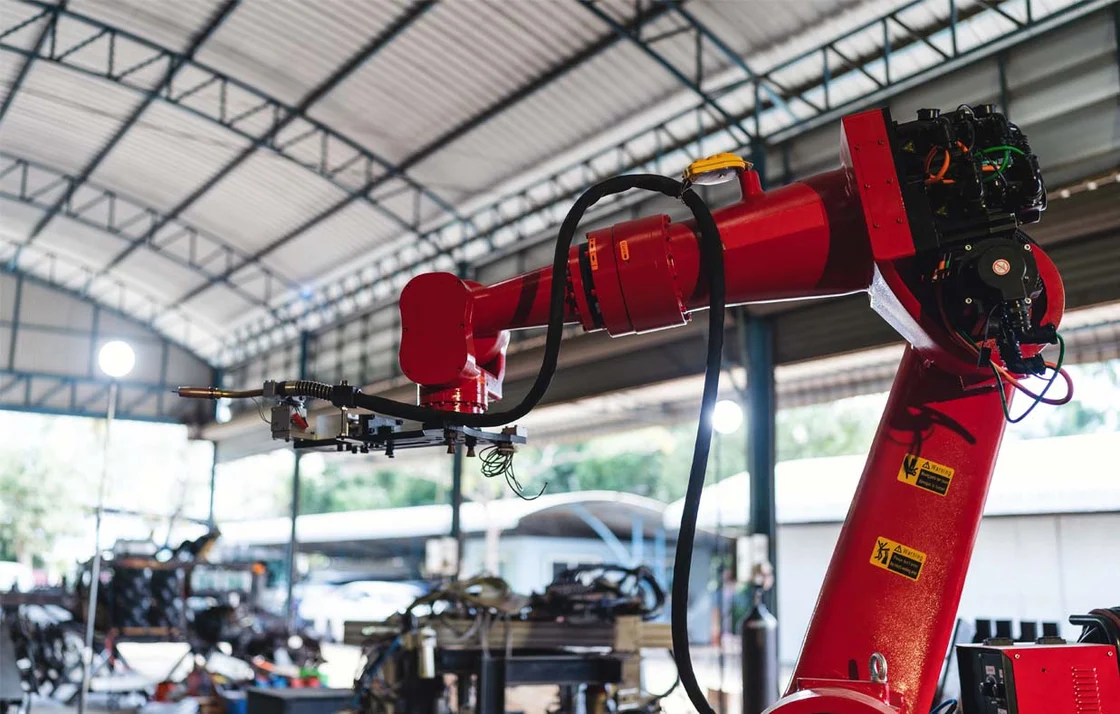AI in Manufacturing vs. Traditional Automation: What’s the Difference?
Understanding the difference between traditional automation and AI-driven systems is essential for manufacturers aiming to enhance efficiency and competitiveness. While both aim to enhance efficiency, they operate on fundamentally different principles. This article delves into the key differences between rule-based systems and learning systems, highlighting how each contributes to modern manufacturing.

In the evolving landscape of manufacturing, understanding the distinctions between traditional automation and artificial intelligence (AI) is crucial. While both aim to enhance efficiency, they operate on fundamentally different principles. This article delves into the key differences between rule-based systems and learning systems, highlighting how each contributes to modern manufacturing.
Rule-Based Systems: The Backbone of Traditional Automation
Traditional automation relies on rule-based systems, where machines perform tasks based on predefined instructions. These systems are highly effective for repetitive and predictable tasks, ensuring consistency and speed in production lines. For instance, a robotic arm might follow a set sequence to assemble components, executing the same actions with precision every time.
Advantages:
- Predictability: Outcomes are consistent, as actions are based on fixed rules.
- Simplicity: Easier to design and implement for straightforward tasks.
- Cost-Effectiveness: Lower initial investment for tasks with clear parameters.
Limitations:
- Lack of Adaptability: Struggles with tasks that deviate from predefined rules.
- Scalability Issues: Difficult to modify for complex or evolving processes.
- Limited Decision-Making: Cannot analyze data or make decisions beyond programmed instructions.
Learning Systems: The Core of AI-Driven Manufacturing
In contrast, learning systems, a subset of AI, utilize data to make decisions and improve over time. These systems can analyze patterns, predict outcomes, and adapt to new situations without explicit reprogramming. For example, an AI system might monitor machine performance, identify anomalies, and predict maintenance needs before failures occur.
Advantages:
- Adaptability: Can adjust to new, unforeseen circumstances.
- Predictive Capabilities: Anticipates issues, reducing downtime.
- Continuous Improvement: Learns from data to enhance performance over time.
Limitations:
- Complexity: Requires substantial data and computational resources.
- Initial Costs: Higher investment for setup and training.
- Data Dependency: Performance is reliant on the quality and quantity of data available.
Integrating Rule-Based and Learning Systems
Modern manufacturing benefits from integrating both approaches. While rule-based systems handle repetitive tasks efficiently, learning systems can manage complex, dynamic processes. This hybrid model allows manufacturers to leverage the strengths of both, ensuring efficiency and adaptability.
Example: A production line might use rule-based systems for assembly tasks and AI-driven systems for quality control and predictive maintenance.
Real-World Applications Powered by StartProto AI
Supply Chain Optimization
StartProto’s AI agents drive intelligent automation in procurement by monitoring production schedules and inventory levels to predict material needs before shortages occur. Drawing on vendor performance, pricing history, and lead-times, these agents recommend optimal supplier selection and even auto-generate complete purchase orders with accurate specifications, quantities, and delivery requirements.
Adaptive Process Automation
StartProto’s AI monitors real-time production data to dynamically reallocate jobs and optimize task priorities across the shop floor. Whether it's adjusting schedules to respond to bottlenecks, reallocating resources when a machine goes offline, or shifting workflows to hit urgent orders.
AI-Enhanced Quoting
StartProto’s AI agents accelerate and improve the quoting process by analyzing part geometries, material requirements, and production timelines. This not only reduces quoting time but also increases accuracy and win rates, enabling manufacturers to respond faster and more competitively.
Conclusion
Understanding the difference between traditional automation and AI-driven systems is essential for manufacturers aiming to enhance efficiency and competitiveness. While rule-based systems offer reliability for repetitive tasks, learning systems provide the adaptability and intelligence needed for modern manufacturing challenges. Integrating both approaches can lead to a more resilient and efficient manufacturing process.
StartProto’s platform combines the reliability of rule-based processes with the adaptability of intelligent automation.
- Rule-Based Precision: StartProto ensures that repetitive, well-defined tasks—like assembly or part handling—are executed consistently and efficiently.
- AI-Driven Adaptability: At the same time, StartProto’s AI continuously learns from production data, optimizing workflows, predicting maintenance needs, and improving quality control.
- Hybrid Advantage: By integrating these approaches, manufacturers can enjoy the predictability of traditional automation alongside the innovation and responsiveness of AI. This hybrid model maximizes efficiency, reduces downtime, and empowers teams to focus on high-value decisions.
Let us show you the power of AI for your shop. Book your demo.
Unlock the potential of AI manufacturing
Blogs & Resources
Industry trends, manufacturing business tips, and more



.png)